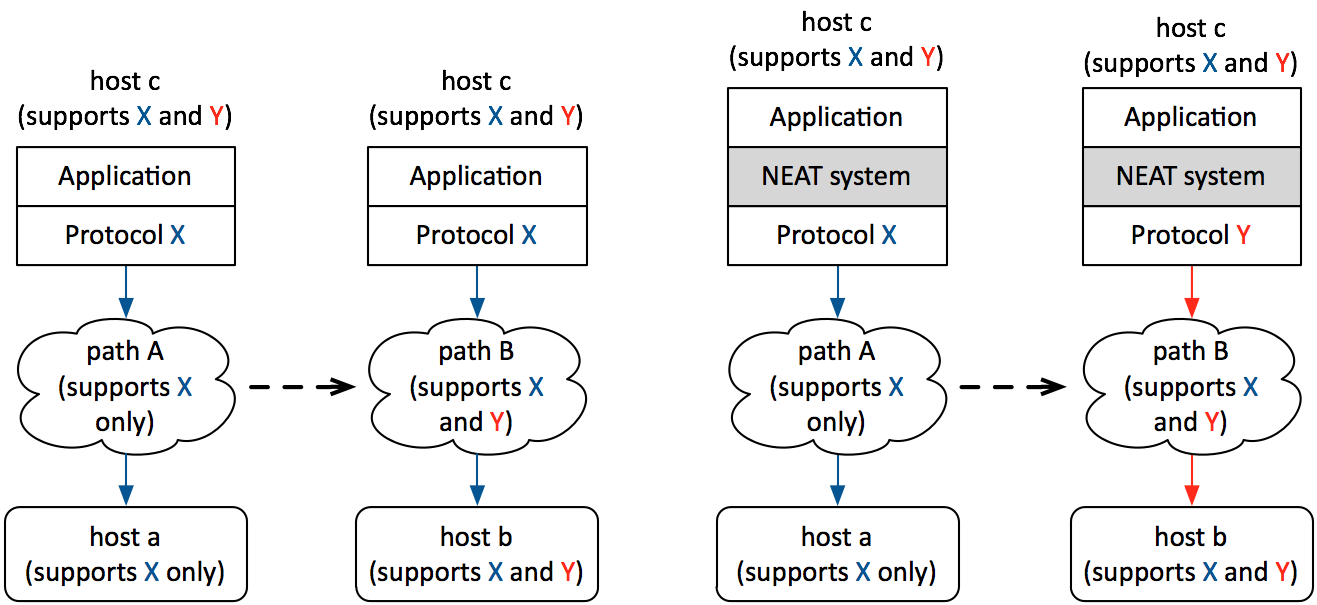NEAT aims at offering a richer set of services to application developers and at enabling innovations across the protocol stack. For this purpose, three main objectives have been defined:
- To design an extensible architecture that decouples the services offered to applications from the protocols, underlying operating systems and platforms, as illustrated below.

- To develop and test a reference implementation of the NEAT transport system that realises its functionality.
- To facilitate the broad adoption of NEAT outcomes, by promoting the results for standardisation and releasing the reference implementation as open-source software.
NEAT will make it easier to develop and deploy applications that efficiently communicate across the Internet. This goal is reached by designing, implementing and deploying:
- A new and advanced API that allows applications to state their needs for communications services.
- An architecture that can coherently offer existing and new communications services to applications.
- An architecture that can interact with the network to improve the applications’ experience.
Four use cases have been initially selected to drive the design work:
- Mobile broadband scenario, considering multi-homed terminals.
- Connecting emerging-market mobile clients to first class Web Services.
- Interactive applications.
- Cloud platforms with distributed storage solutions across a network of datacentres.
